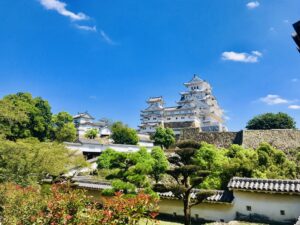Azuchi Castle, the first picturesque light-up event in Japan
Samurai Oda Nobunaga had a great zeal to realize a peaceful nation through his clever strategies, rationalism, and immense military power to end the Warring States Period. After seeing people’s joyful faces at the light-up event, he likely felt a deep sense of emotion and elation, realizing his lifelong ambitions of ending in the era of turmoil. Let’s explore Nobunaga’s life and learn about his unwavering dedication to fighting for his beliefs
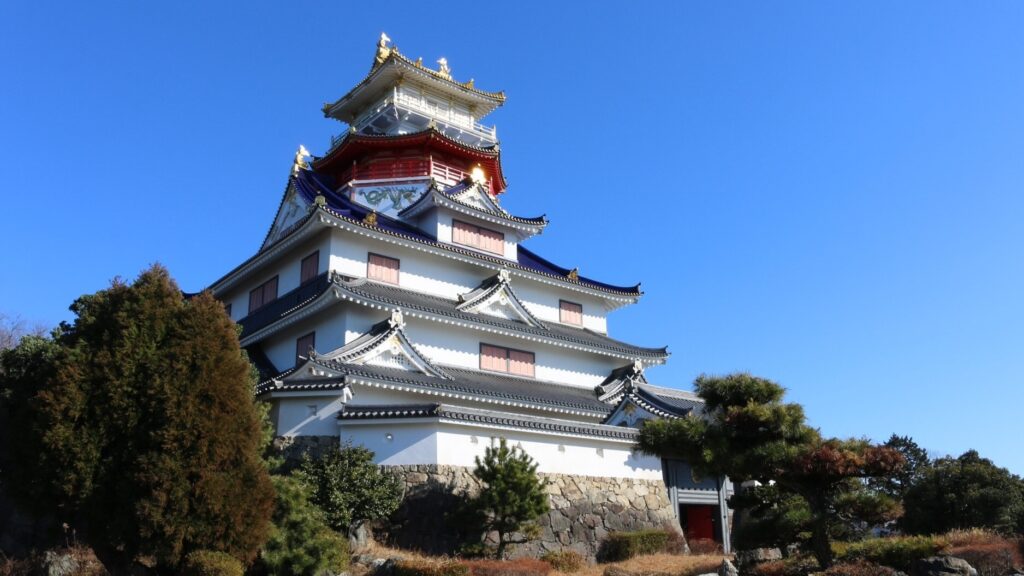
The Illumination Light of Peace: Ending the Warring States
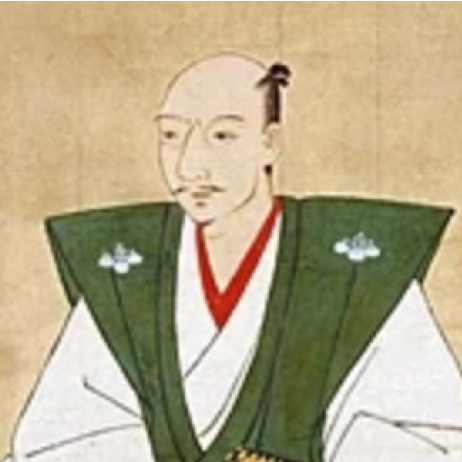
On July 15th, 1581 of the lunar calendar (August 23rd of the new calendar), the town of Azuchi Castle was enveloped in darkness. However, the enormous numbers of lanterns hung under the eaves of Azuchi Castle and the fire torches put up by many vassals of Oda Nobunaga (1534-1582, 織田信長) along the main street and on boats floating on Lake Biwa were lit all at once. As a result, Azuchi Castle town and the castle itself were illuminated, and lantern light reflected on the surface of Lake Biwa. It was fantastically beautiful and indescribable. Many people enjoyed the wonderful night of the special Bon festival. Normally, a bonfire is lit in front of the house to welcome and see off their ancestor’s spirits from and to the other world or heaven. Nobunaga was 48 years old. People felt confident that Nobunaga had brought about a peaceful and stable unified society after decades-long battles.
"Tenka-Fubu", Nobunaga’s slogan to stabilize the nation with military power
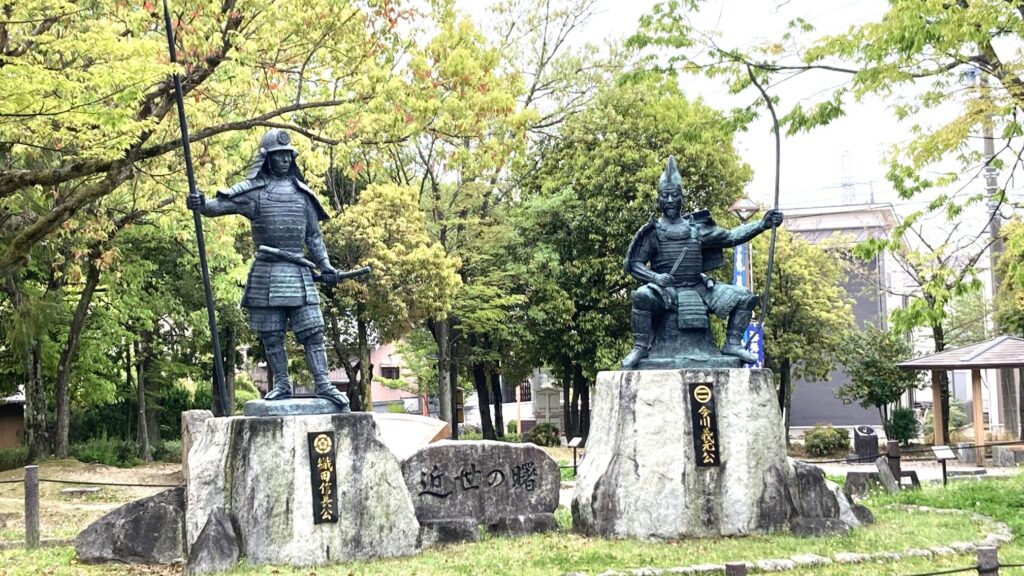
Nobunaga gained national recognition at the age of 27 after defeating the powerful territorial military lord of Suruga (Shizuoka prefecture), Imagawa Yoshimoto (1519~1560, 今川義元). He led a strategic attack with only 300 warriors at Okehazama during heavy rainfall in 1560 on Yoshimoto’s army headquarters straightforwardly. Before the attack, he dispersed Yoshimoto’s army by luring them deep into his territory and reducing Yoshimoto’s soldiers surrounding him. Once Nobunaga obtained the crucial information about Yoshimoto's whereabouts, he and his main unit charged forward, successfully taking the head of Yoshimoto. This victory was unexpected and caught everyone by surprise.

Nobunaga's next target was the Saito clan, who lived in Inabayama castle in Mino province (Gifu city), located north of Nobunaga's territory. At the age of 33, he built Komakiyama Castle, as a base for attacking the Saito clan. In 1567, the following year, Nobunaga defeated the Saito clan, entered the Inabayama castle, and renamed it Gifu Castle. Around this time, he began using the stamp “Tenka-fubu” or "Unification of the nation by military power" in his letters to express his ambition of achieving peace and tranquility in and around Kyoto by using military power by restoring the Shogunate, despite the presence of more powerful military lords.
Entered Kyoto to revive the Muromachi Shogunate
The next step was to enter the capital of Kyoto. At that time, the Muromachi Shogunate's supreme position was vacant due to the assassination of the 13th Shogun, Ashikaga Yoshiteru, by the Miyoshi clan. Nobunaga allied with several warlords to besiege the Miyoshi clan, backing up Yoshiteru’s brother Ashikaga Yoshiaki (1537~1597, 足利義昭), and marched towards Kyoto to restore the Muromachi Shogunate. Nobunaga used his military leadership to defeat his enemies one by one, including the Asai, Asakura, and Takeda clans, as well as monk warriors, by his slogan, “Tenka Fubu”. His life was a series of battles.
Azuchi Castle is the base of Nobunaga’s political power
After he defeated anti-Nobunaga’s 4,000 monk warriors of Enryakuji Temple on Mt.Hiei in 1571, he ordered Akechi Mitushide (1528-1582, 明智光秀), one of his right retainers to build Sakamoto Castle at the base of Mt.Hiei. He also allowed Toyotomi Hideyoshi (1537-1598, 豊臣秀吉), another right retainer, to build Nagahama Castle, which had great deterrent power over two powerful military lords of the northern area of Lake Biwa: the Asai and Asakura clans. After Nobunaga’s victories against them in 1573, he started building Azuchi castle equidistantly between Sakamoto and Nagahama castles in 1576, and its tower was completed in 1579. During this time, Nobunaga also defeated his rival, the Takeda clan, at the Battle of Nagashino & Shitragahara with about 3,000 matchlock guns. These three castles, situated close to Lake Biwa, allowed for immediate communication by signal fire and were easily accessible from one to the other by boat across the lake. Azuchi was a strategically important military location and an important point for traffic for the economy. It is also located at the exit of the mountain route from Nobunaga’s Gifu Castle at the shore of Lake Biwa. A 7-meter-wide stone stairway from the base went straight up 180 meters to the Kuroganemon, the defensive gate, to enter the castle's core. Looking up, one would see the octagonal-shaped tall castle tower covered with gold leaf, which would surely be overwhelming.
A 10-year-long fierce battle against Osaka Honganji Temple
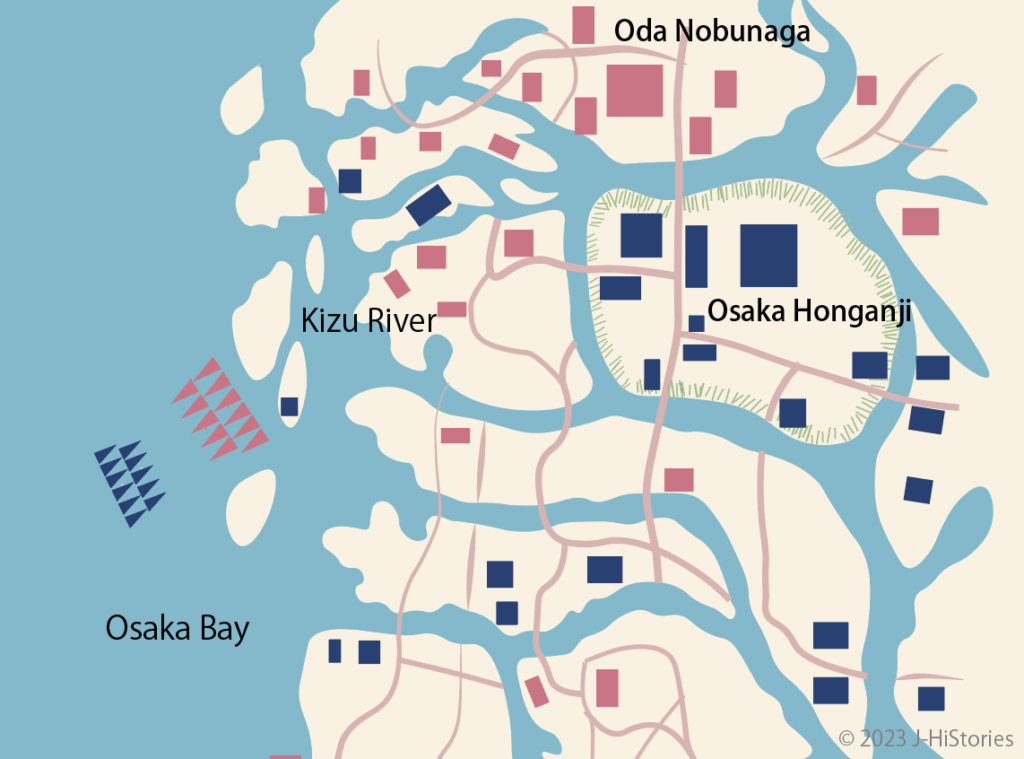
After a decade-long battle, he made peace with Osaka Hongwanji Temple located at Ishiyama, later Osaka Castle was built, in 1580. This plateau served as another strategic point for traffic, acting as a gateway to the Seto Inland Sea. One year later, Azuchi castle and its town were illuminated. This probably demonstrated that the world was almost at peace. Azuchi castle appeared to be a fortress not only for combat but also as a symbol that inspired awe in all who saw it.
Nobunaga fell on his sword
One year later, during his, final war against the Mori clan in the western region to realize the unification of Japan, he was suddenly attacked by Mitsuhide and died at Honnoji Temple in Kyoto in 1582 at the age of 49. Mitsuhide’s 13,000 warriors surrounded the temple, while Nobunaga had only around 150 troops. It is said that Nobunaga strictly ordered his vassals not to allow him to take his dead body after he had made up his mind about his death. After that, he set fire to the temple and committed suicide with a sword. Mitsuhide tried desperately to find Nobunaga’s head because it was mandatory to declare his victory, but he was unable to find it. Consequently, Mitsuhide’s rival, Hideyoshi, defeated Mitsuhide as a traitor just several days after the incident. On his way back to Kyoto, his letter to many federal lords stated that “Nobunaga is alive”, causing them not to side with Mitsuhide. This incident is one of the three major mysteries in Japanese history because Nobunaga’s remains were not found, and Mitsuhide’s motive has not yet been unraveled.
Azuchi Phantom Castle
Without Nobunaga, Azuchi castle was burnt down to the ground and became a phantom castle. In 2007, Azuchiyama-Zu-byoubu (a folding screen with an image of Azuchi Castle) was confirmed to have been displayed in the gallery of maps at the Vatican. It was presented by Nobunaga to Pope Gregory Xlll through four young boys of the Tensho Embassy. Nobunaga ordered Kano Eitoku, a Japanese painter of the Kano school, to paint the Azuchi Castle and its town in detail. The painting has yet to be found, and research is ongoing. Please enjoy imagining the first illumination back in the 15th century while thinking of Nobunaga’s great zeal to realize a peaceful world with his military power in a tumultuous Warring States period.
Oda Nobunaga Timeline
| 1336 | Ashikaga Takauji estabilished Muromachi Shogunate | Muromachi Period | - |
| 1467 | Onin War started (- 1477) | - | |
| 1493 | Hojo Soun - the first warlord in Japan history - settled Izu province by defeating Horikoshi Kubo | - | |
| 1534 | Nobunaga was born in Owari province | Age=1 | |
| 1560 | Nobunaga defeated Imagawa Yoshimoto at the battle of Okehazama | 27 | |
| 1563 | Nobunaga built his 1st own Komakiyama Castle | 30 | |
| 1567 | Nobunaga moved to Gifu Casle and started to use the "Tenka-fubu" stamp | 34 | |
| 1568 | Nobunaga went up Kyoto bringing Ashikaga Yoshiaki | 35 | |
| 1570 | Osaka Hongwanji raised the army against Nobunaga | 37 | |
| 1571 | Nobunaga defeated Enryakuji Temple's monk solduers | 38 | |
| 1573 | Nobunaga defeated the Asai and Asakura clans and ousted Ashikaga Shogun from Kyoto | 40 | |
| 1575 | Nobunaga defeated the Takeda Clan at the battle of Nagashino and Shitaragahara | Azuchi Momoyama Period | 42 |
| 1576 | Nobunaga started the constraction of Azuchi Castle | 43 | |
| 1579 | The Azuchi Castle Tower was completed | 46 | |
| 1580 | Nobunaga made peace with Ishiyama Hongwanji Temple | 47 | |
| 1582 | Nobunaga was killed at Honnoji by Akechi Mitsuhide | 49 | |
| 1582 | Hideyoshi defeated Akechi Mitsuhide | - | |
| 1590 | Hideyoshi unified the nation | - | |
| 1598 | Hideyoshi passed away | - | |
| 1600 | Tokugawa Ieyasu defeated Ishida Mitsunari, Hideyoshi's right arm at the battle of Sekigahara | - | |
| 1603 | Ieyasu estabished Tokugawa Shogunate at Edo | Edo Period | - |
| 1615 | Toyotomi's Osaka Castle burnt down to the ground at the Summer Siege of Osaka | - |
Recommendations to visit
Azuchi-jo Castle museum
- Access: 40 minutes from JR Kyoto Station. Take the Tokaido Main Line bound for Maibara and get off at Azuchi Station (安土). A 30-minute walk or take a taxi.
Azuchi Castle ruins
- Access: 40 minutes from JR Kyoto Station. Take the Tokaido Main Line bound for Maibara and get off at Azuchi Station (安土). A 25-minute walk or take a taxi.


